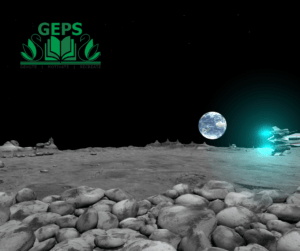
Chandrayaan-1: India’s Pioneering Journey to the Moon
In a significant milestone for India’s space exploration program, Chandrayaan-1, the country’s first lunar mission, marked a remarkable achievement in 2008. As the Indian Space Research Organisation’s (ISRO) maiden unmanned mission to the Moon, Chandrayaan-1 contributed immensely to our understanding of Earth’s celestial neighbor. This article delves into the objectives, key discoveries, and legacy of Chandrayaan-1, showcasing India’s strides in space exploration.
Objectives of Chandrayaan-1
Chandrayaan-1, which translates to “Moon Craft” in Sanskrit, aimed to achieve three primary scientific objectives:
- It aimed to create a comprehensive map of the Moon’s surface, particularly its topography, mineralogy, and elemental composition.
- It sought to investigate the presence of water molecules on the Moon, specifically focusing on the polar regions.
- The mission aimed to explore the Moon’s exosphere and analyze the interaction between the solar wind and the lunar surface.
Key Discoveries and Contributions

1. Confirmation of Water on the Moon: One of the most significant discoveries of Chandrayaan-1 was the confirmation of the presence of water molecules on the lunar surface. The Moon was long believed to be an arid and dry celestial body, but Chandrayaan-1’s Moon Mineralogy Mapper (M3) instrument detected water molecules in the thin layer of lunar soil. This finding challenged previous assumptions and opened doors to further research on the Moon’s hydrological history.
2. Detailed Mapping of the Lunar Surface: Chandrayaan-1 carried high-resolution remote sensing instruments that captured detailed images and collected data about the Moon’s topography and mineral composition. These findings helped scientists create accurate three-dimensional maps of the lunar surface, revealing new insights into its geological evolution and identifying potential landing sites for future missions.
3. Discovery of “Bridges” on the Lunar Surface: Another exciting discovery by Chandrayaan-1 was the identification of lunar “swirls” or “bridges” – faint magnetic features observed in several locations on the Moon’s surface. These swirls indicated the presence of localized magnetic fields, challenging previous assumptions about the Moon’s magnetism. The origin and significance of these magnetic anomalies continue to be a subject of ongoing research.
4. Confirmation of Lunar Ice Deposits: Chandrayaan-1’s Moon Impact Probe (MIP) detected water ice in the permanently shadowed regions of the lunar poles. This discovery provided crucial evidence for the presence of frozen water on the Moon, potentially offering valuable resources for future lunar exploration and colonization endeavors.
Legacy and Future Missions
Chandrayaan-1’s successful mission paved the way for subsequent lunar missions, showcasing India’s technological prowess and commitment to space exploration. The experience gained during Chandrayaan-1 served as a foundation for developing Chandrayaan-2, which successfully deployed a lander and rover on the Moon’s surface in 2019.
Moreover, Chandrayaan-1’s contributions are not limited to India’s space program alone. The data and scientific insights gathered by the mission were shared with the international scientific community, fostering collaborative research and enriching our understanding of the Moon’s composition, geology, and evolution.
On 14/07/2023, ISRO plans to launch Chandrayaan-3, a follow-up mission to further explore the lunar surface and build upon the successes of its predecessors. Chandrayaan-3 aims to land a rover on the Moon’s surface near the yet-unexplored south pole region, conducting in-depth studies and enhancing our knowledge of Earth’s closest celestial companion.
Conclusion
Chandrayaan-1 marked a significant milestone in India’s space exploration journey, making remarkable contributions to our understanding of the Moon. The mission’s findings challenged existing assumptions about the Moon’s geology, magnetism, and the presence of water. Chandrayaan-1 demonstrated India’s technological capabilities and laid the groundwork for future lunar missions, fostering international collaboration in space research. As India continues to expand its space program, Chandrayaan-1 will always be remembered as a pioneering mission that opened new frontiers in lunar exploration.




